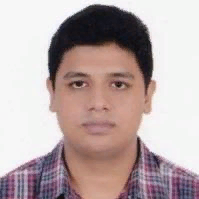
Mahtab Ahmed
Work place: Dept. of Computer Science and Engineering Khulna University of Engineering & Technology (KUET), Khulna-9203, Bangladesh
E-mail: mahtab@cse.kuet.ac.bd
Website:
Research Interests: Pattern Recognition, Image Compression, Image Manipulation, Image Processing, Speech Recognition, Speech Synthesis
Biography
Mahtab Ahmed received the B.Sc. degree in Computer Science and Engineering (CSE) from Khulna University of Engineering and Technology (KUET), Bangladesh in 2014. At present he is serving as a Lecturer at KUET. His research interest includes pattern recognition, speech and image processing and advanced machine learning.
Author Articles
Recognizing Bangla Handwritten Numeral Utilizing Deep Long Short Term Memory
By Mahtab Ahmed M. A. H. Akhand M. M. Hafizur Rahman
DOI: https://doi.org/10.5815/ijigsp.2019.01.03, Pub. Date: 8 Jan. 2019
Handwritten numeral recognition (HNR) has gained much attention in present days as it can be applied in range of applications. Research on unconstrained HNR has shown impressive progress in few scripts but is far behind for Bangla although it is one of the major languages. Bangla contains similar shaped numerals which are difficult to distinguish even in printed form and this makes Bangla HNR (BHNR) a challenging task. Our goal in this study is to build up a superior BHNR framework and consequently explore the profound design of Long Short Term Memory (LSTM) method. LSTM is a variation of Recurrent Neural Network and is effectively used for sequence ordering with its distinct features. This study considered deep architecture of LSTM for better performance. The proposed BHNR with deep LSTM (BNHR-DLSTM) standardizes the composed numeral images first and then utilizes two layers of LSTM to characterize singular numerals. Benchmark dataset with 22000 handwritten numerals having various shapes, sizes and varieties are utilized to examine the proficiency of BNHR-DLSTM. The proposed method indicates agreeable recognition precision and beat other conspicuous existing methods.
[...] Read more.Convolutional Neural Network based Handwritten Bengali and Bengali-English Mixed Numeral Recognition
By M. A. H. Akhand Mahtab Ahmed M. M. Hafizur Rahman
DOI: https://doi.org/10.5815/ijigsp.2016.09.06, Pub. Date: 8 Sep. 2016
Recognition of handwritten numerals has gained much interest in recent years due to its various potential applications. Bengali is the fifth ranked among the spoken languages of the world. However, due to inherent difficulties of Bengali numeral recognition, a very few study on handwritten Bengali numeral recognition is found with respect to other major languages. The existing Bengali numeral recognition methods used distinct feature extraction techniques and various classification tools. Recently, convolutional neural network (CNN) is found efficient for image classification with its distinct features. In this paper, we have investigated a CNN based Bengali handwritten numeral recognition scheme. Since English numerals are frequently used with Bengali numerals, handwritten Bengali-English mixed numerals are also investigated in this study. The proposed scheme uses moderate pre-processing technique to generate patterns from images of handwritten numerals and then employs CNN to classify individual numerals. It does not employ any feature extraction method like other related works. The proposed method showed satisfactory recognition accuracy on the benchmark data set and outperformed other prominent existing methods for both Bengali and Bengali-English mixed cases.
[...] Read more.Acoustic Modeling of Bangla Words using Deep Belief Network
By Mahtab Ahmed Pintu Chandra Shill Kaidul Islam M. A. H. Akhand
DOI: https://doi.org/10.5815/ijigsp.2015.10.03, Pub. Date: 8 Sep. 2015
Recently, speech recognition (SR) has drawn a great attraction to the research community due to its importance in human-computer interaction bearing scopes in many important tasks. In a SR system, acoustic modelling (AM) is crucial one which contains statistical representation of every distinct sound that makes up the word. A number of prominent SR methods are available for English and Russian languages with Deep Belief Network (DBN) and other techniques with respect to other major languages such as Bangla. This paper investigates acoustic modeling of Bangla words using DBN combined with HMM for Bangla SR. In this study, Mel Frequency Cepstral Coefficients (MFCCs) is used to accurately represent the shape of the vocal tract that manifests itself in the envelope of the short time power spectrum. Then DBN is trained with these feature vectors to calculate each of the phoneme states. Later on enhanced gradient is used to slightly adjust the model parameters to make it more accurate. In addition, performance on training RBMs improved by using adaptive learning, weight decay and momentum factor. Total 840 utterances (20 utterances for each of 42 speakers) of the words are used in this study. The proposed method is shown satisfactory recognition accuracy and outperformed other prominent existing methods.
[...] Read more.Other Articles
Subscribe to receive issue release notifications and newsletters from MECS Press journals